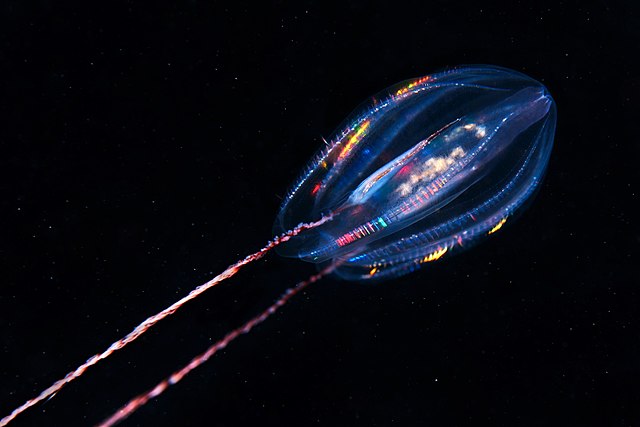
Scientists have recently discovered a strong answer to a long-standing question about the earliest multicellular animal on Earth. For a while, sponges (Porifera) were considered the top contender for this title because of their simple structure, particularly their lack of a nervous system. However, as we’ve gained more knowledge about genetic histories, a new competitor has emerged.
Resemblance between comb jellyfish and true jellyfish
Fresh evidence now suggests that comb jellyfish (ctenophores), despite their resemblance to true jellyfish, are only distantly related to them.
Surprisingly, these comb jellyfish take the lead as the “first” multicellular animal, even though they have a more complex and differentiated nervous system. This discovery highlights how evolution doesn’t always follow a straightforward path toward increased complexity.
Daniel Rokhsar, a molecular biologist and the study author at the University of California explained, “The most recent common ancestor of all animals probably lived 600 or 700 million years ago. It’s hard to know what they were like because they were soft-bodied animals and didn’t leave a direct fossil record. But we can use comparisons across living animals to learn about our common ancestors.”
Recent study approach
Previous research focused solely on analyzing gene sequences, which led to conflicting outcomes. Some sequences pointed to sponges as the first multicellular animals, while others indicated comb jellyfish.
In a recent study conducted by Darrin Schultz, a bioinformatician from the University of Vienna, and his team, a new approach was taken. Instead of solely relying on gene sequences, they examined the organization of highly conserved gene sequences in chromosomes, the genetic molecules.
To understand the order of evolutionary events among different organisms, the researchers compared the newly sequenced genomes of comb jellyfish, two types of marine sponges, two single-celled organisms (choanoflagellates and amoeba), and a microbial fish parasite that shares characteristics with both animals and fungi (ichthyosporea).
By studying the arrangement of highly conserved gene sequences within the same chromosome across all the animals, a clear pattern emerged.
Results devised from the recent study
Sponges and the more modern animals displayed similar traits resulting from a rare type of chromosome fusion and rearrangement event. However, this pattern was absent in comb jellyfish, whose genomes resembled those of other unicellular organisms.
According to Rokhsar, “We found a handful of rearrangements shared by sponges and non-ctenophore animals. In contrast, ctenophores resembled non-animals. The simplest explanation is that ctenophores branched off before the rearrangements occurred.”
NERD POST 🤓 Ctenophores, or comb jellies, are weird jelly-like animals that move through water by tiny cilia/hairs using propulsion. They date back ~540 million years. Their nervous system is like nothing ever known before; it's fused not neural like all known beings > pic.twitter.com/t5pbfmh5OZ
— Lia L'Assassin ★ Nutcracker Sweet (@Design_Assassin) May 17, 2023
Based on the research findings, it is highly probable that comb jellyfish were the first to evolve, preceding the emergence of sponges. Subsequently, sponges passed down their unique chromosome arrangement to their descendant animals.
Rokhsar explained, “…. the signal is there and strongly supports the ‘ctenophore-branched-first’ scenario. The only way the alternative sponge-first hypothesis could be true would be if multiple convergent rearrangements happened in both sponges and non-ctenophore animals, which is very unlikely.”
See all the latest news from Greece and the world at Greekreporter.com. Contact our newsroom to report an update or send your story, photos and videos. Follow GR on Google News and subscribe here to our daily email!



